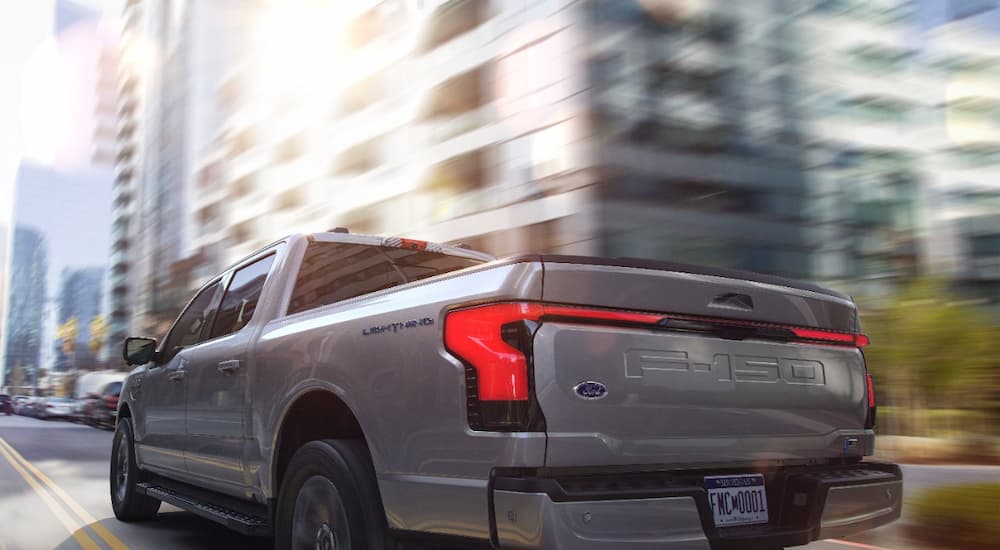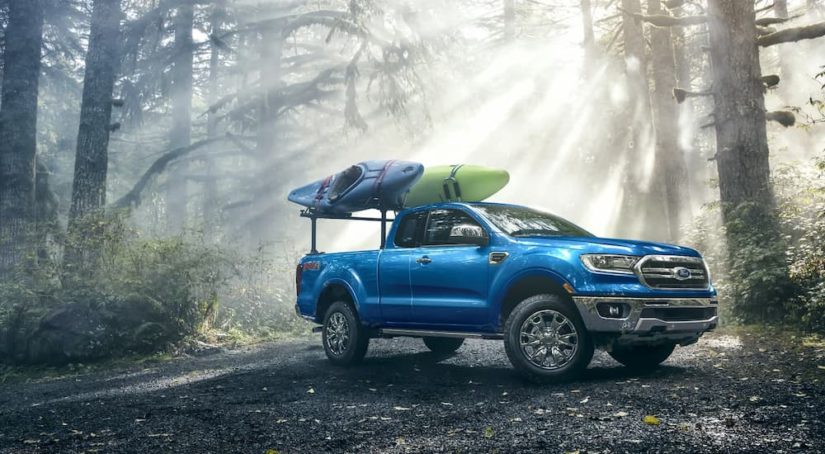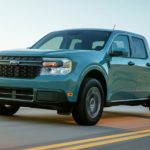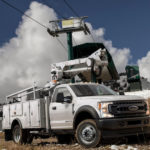The Ford lineup might not be quite as diverse overall as it once was (what’s a sedan?), but in some respects, it has grown significantly. If you’re looking for a great Ford SUV, then this isn’t the article for you. Today we’re looking at the different trucks that you’ll find at your local Ford dealer to see what they offer. Right now, Ford has more trucks available than they have in a long time, especially if you’re mostly looking at their consumer lineup, which includes the all-new Ford Maverick, classics like the Ranger and F-150, and of course the new all-electric Ford F-150 Lightning.
With so many options available, figuring out which one will work best for you can be a bit tricky, particularly if you’re trying to keep track of everything all of them have to offer. Today, we’re going to simplify things a bit and look at some key points that can help you narrow down all of these options and get just what you need. You’ll still have to figure out some other details, like which of the many trim levels and available options will come together into the perfect truck for you, but this should at least help. Just remember to look at the specs on any particular model you’re interested in before you buy it since payload and other things can vary a lot.
First Way to Choose: Truck Size
One of the simplest ways to narrow down your options and choose the right Ford truck for what you need is by the size of the pickup. Just last year, I would’ve told you that you have two major choices to make: a midsize truck or a full-size option (plus different full-size categories that we’ll get to in a moment). Starting with this model year, however, Ford has added onto this by introducing a new compact pickup to their lineup, giving you three different truck sizes to choose from. To get a sense of just how much of a difference there can be between these different pickups, here is each basic model, size category, and longest possible length:
- Maverick: Compact – 199.7 in
- Ranger: Midsize – 210.8 in
- F-150: Full-Size – 250.3 in
- F-350: Full-Size – 266.2 in
Overall, the differences in total length are pretty substantial. The Ranger is nearly a foot longer than the Maverick, and the difference between the Maverick and the Ford F-350 is more than five feet in total length. You might be wondering about the difference between those two “full-size” options. The F-150 is a standard, light-duty model, while the F-350 is part of the Super Duty lineup, so it’s a full-size, heavy-duty option. The length difference, at least in part, comes down to the fact that for the F-150, you can only choose a SuperCrew cab with up to a 6.5-foot bed, while a Crew cab is offered with an 8-foot bed on the F-350.
While we’re looking at the difference between the various F-Series models, you can see there are distinctions in physical length between them. Although this is certainly a consideration, for most people, the difference and deciding on the right model will really come down to their size in terms of what they’re capable of. You’ll hear terms like “half-ton” and “full-ton” truck when people talk about these models, but those are mostly names of convenience from decades ago. The actual payload capacity of these trucks is much greater than they used to be, so don’t go off whether something is called a “quarter-ton” truck.

Second Way to Choose: Payload Rating
Payload capacity is one of the best ways to decide on the right truck for what you need, especially if you like to load up the bed with a lot of weight. This is one of the biggest differences between the trucks in the Ford lineup, and it can quickly help you eliminate pickups that won’t work for you. In general, the simple rule is that bigger trucks are able to handle greater payload (and greater towing too, but we’ll get to that down below). So if you can’t get the kind of capability you want from the Ford Maverick, then you should look to the Ford Ranger or even one of the F-Series models.
Of course, the important thing to remember is that this is just a general rule – in actual practice, you could potentially find a Ford Ranger model with greater payload capacity than an F-150. This all comes down to the configuration you’re looking at and how it is equipped. The more weight you add onto a truck, like with a heavier engine or suspension, the less payload it can ultimately handle. Overall, a larger truck is going to have greater payload options than a smaller model. To see what I mean, here is the maximum payload for each 2022 model when properly equipped:
- Maverick: 1,500 lbs
- Ranger: 1,860 lbs
- F-150: 3,325 lbs
- F-250: 4,260 lbs
- F-350: 7,850 lbs
You can see just how big a difference there can be between these different trucks. While the shift from the Maverick to the Ranger isn’t huge, once you go beyond that, it gets quite substantial. With its dual-rear-wheel option, the F-350 has more than double the maximum payload rating as the F-150 and more than five times the payload of the Ford Maverick.
Third Way to Choose: Towing Capacity
Payload is only half the picture when it comes to truck capability; you also want to look at how much weight you can pull behind any pickup that you’re interested in. Once again, towing capacity can vary wildly when you look at the specifics of any given model since it depends on the engine you choose, any available towing packages for the truck, and other factors. Still, in general, as you go from smaller to larger trucks, you’ll also find an increase in their maximum towing ability. This is especially true for larger models when you look at fifth-wheel or gooseneck towing, where something like the F-350 destroys what the F-150 can do.
Here are the maximum towing capacities for these Ford trucks, when properly equipped:
- Maverick: 4,000 lbs
- Ranger: 7,500 lbs
- F-150: 14,000 lbs
- F-250: 22,800 lbs
- F-350: 35,750 lbs
Note that those numbers for the Super Duty models are for gooseneck towing; for conventional towing, the F-250 can handle up to 15,000 lbs while the F-350 gets up to 20,000 lbs of max towing. That’s still a significant improvement over the smaller trucks, but it showcases just how incredible the fifth-wheel towing is with these models. You might’ve noticed something was missing from these lists so far; however, something a bit…shocking?

Fourth Way to Choose: Powertrain
Capability aside, the engine in a truck is obviously going to be incredibly important, not only because it impacts things like payload and towing but also because it governs so much of your pickup’s performance. As you look at different Ford trucks, you’ll typically see a couple of different standard gas engines on offer. The Ford F-150 has numerous engines you can choose including a couple of turbo engines and even a hybrid, while the Super Duty models let you pick from two different V8s and a diesel engine.
Of course, the big thing that everyone is talking about is the F-150 Lightning, which is an all-electric pickup set to hit the road this year. As an EV model, the F-150 Lightning has two different powertrain options that impact the horsepower and range the truck can go on a full charge, along with the towing capacity. Right now, there’s not a lot of real-world testing to look at for how the Lightning performs, but Ford states the Extended-Range model will be able to handle up to 10,000 lbs of towing and get about 300 miles of range from a full charge. There’s no denying that this is going to be an impressive first EV pickup from Ford; if that’s something you’re interested in, then this is certainly the way to go.
Get a Great Truck No Matter Which Way You Choose
As you can see, there are plenty of things to consider when choosing a truck. The best way to start picking a model is to consider what is the most important thing for you to have. Do you need something small? A lot of payload capability? Do you have a preferred engine? These are all ways you can narrow down your choices until you find the best truck model for your needs.



